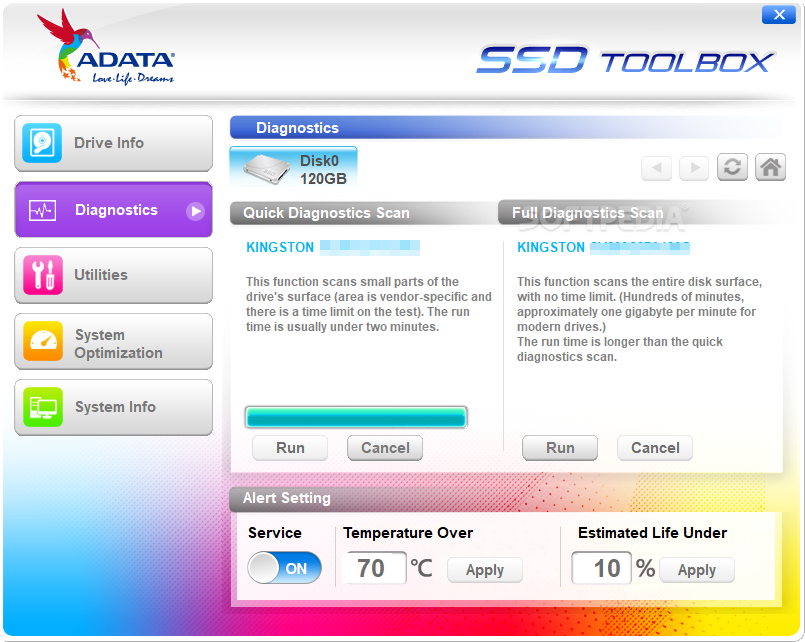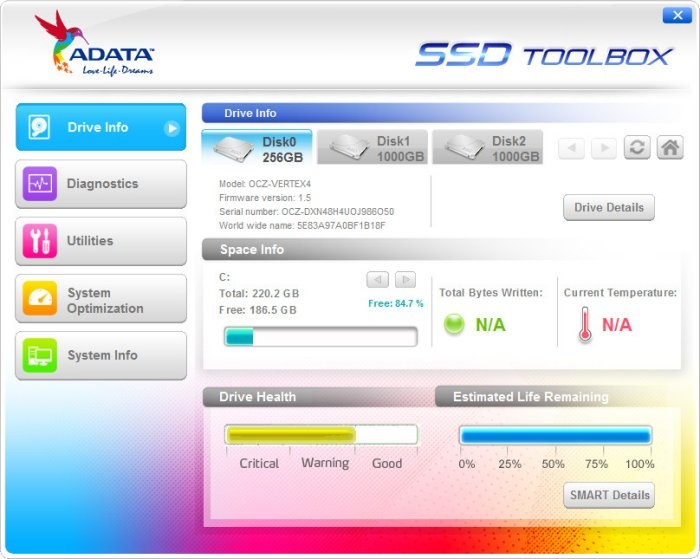

- #BOOT FROM USB ADATA SSD TOOLBOX INSTALL#
- #BOOT FROM USB ADATA SSD TOOLBOX 64 BIT#
- #BOOT FROM USB ADATA SSD TOOLBOX FULL#
- #BOOT FROM USB ADATA SSD TOOLBOX ANDROID#
- #BOOT FROM USB ADATA SSD TOOLBOX SOFTWARE#


System Optimization - SSD Optimization provides TRIM service on free space of the drive.Utilities - SSD utilities include Security Erase, Firmware update, SSD Toolbox upgrade, and export log.
#BOOT FROM USB ADATA SSD TOOLBOX FULL#
#BOOT FROM USB ADATA SSD TOOLBOX SOFTWARE#
The only true way to implement a mirrored boot pool that would bootstrap even with a fault is to use a RAID card that would control this action, software RAID can't do this. One of the big things with using a mirrored boot pool is that in most configurations I have seen here, if the primary boot drive fails then the user has a dead system until they reconfigure the motherboard to boot from the alternate/good device and sometimes that also means physically removing the failed device. I just want to get it right.Ĭlick to expand.I couldn't agree more, the use case matters. I just need some suggestions before I make my final build.
#BOOT FROM USB ADATA SSD TOOLBOX ANDROID#
The Android version supports Android 6.0 and above, and the compatibility is based on the native operating system released by Google.
#BOOT FROM USB ADATA SSD TOOLBOX 64 BIT#
Windows version supports 32 and 64 bit versions Microsoft Windows 7/8 /10. I could mirror either the NVMe or the SSD, but as rebuilding a FreeNas server seems quite trivial, I don't see the need. ADATA USB Flash Drive / External Hard Drives / External Solid State Drives. I've used a WD Blue SSD as my boot drive on my Windows box for about 3 years with absolutely no problems and I suspect the NVMe would have the same error free longevity. But that menu item is now missing in the 11.3-U1 GUI.īoth the NVMe and SSD cost about 5 times more than the USBs. Under 11.2-U8, replacing the USB stick on the fly was pretty simple. The cost for the USB sticks is minimal, but I have had two USB failures in the two months I've been testing FreeNAS. In documentation I found that, on power on, the USB ports. So the question I'm posing is it better to use a single NVMe or SSD as a FreeNAS boot drive, or to continue using 2 USB sticks in a mirror? But still I have the same problem To make SSD visible I have to unplug it and pug it back. So at the same time I also purchased a 256GB NVMe stick, a 250GB WD Blue SSD and four Transcend USB sticks. This motherboard has support for 2 NVMe devices. Motherboard is ASUS P11C-M/4L, with Xeon E-2236 cpu, 32GB ECC memory and 4 x 4TB Seagate IronWolf drives. The ADATA SSD Toolbox gives the ability for users to audit drive health and remaining drive life via Self-Monitoring, Analysis, and Reporting Technology (S.M.A.R.T.) attributes. and salvage data from all devices like RAID, HDD, SSD, USB, etc. Probably not up to the spec most gurus here request, but it was what was both available and in my price range. Right 1 Hi, I have an 80GB USB Hard Drive that I connect to my computer to store files. This window is Drive Info tab of ADATA SSD Toolbox, which displays all connected drives, including non-ADATA products. Step 2: Launch ADATA SSD Toolbox and then you will get the following window.
#BOOT FROM USB ADATA SSD TOOLBOX INSTALL#
I have finally received the hardware for my new FreeNAS server. Step 1: Download ADATA SSD Toolbox from its official website and then install it.


 0 kommentar(er)
0 kommentar(er)
